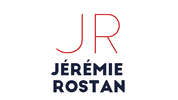|
thus freeign up class time for interactive, collaborative and participatory learning activities. In this sense, “ the concept of a flipped classroom is congruent to active learning, encouraging students’ participation in instructional activities other than passive listening and watching.”
In a new study, two researchers examined the effects of such a flipped approach by studying 79 pre-service teachers enrolled in a technology integration course as part of their certification programme. As described by the authors, “the intervention was implemented for a unit of instructional material production for three weeks in the middle of the semester. The unit aimed to teach pre-service teachers the functions of multimedia production software. Students were expected to produce instructional materials in the form of images, audio, and video, respectively. The programmes used were Adobe Photoshop for image media development, GoldWave for audio, and Windows Movie Maker for video production. An instructor taught all groups, and both control and treatment groups had identical learning tasks, textbooks, and course materials except for the instructional methods: the flipped classroom and traditional classroom.” Students in the “flipped” group were to access an e-book composed of 3 chapters on image editing software (Adobe Photoshop), audio editing software (GoldWave) and video editing software (Windows Movie Maker). Each chapter included text descriptions of the functions of the software, short tutorials demonstrating editing tasks, as well as practice exercises. As for class time, it was devoted to Q&A, advanced learning, and individual feedback. The control group did not have pre-assignments before class, and the latter was mainly spent on the teacher’s presentation on how to use the software step by step, with the students following the directions on their own computer. At the end of the intervention, students were evaluated with a written test and a performance task on their mastery of the three multimedia production programmes they had been studying. The written test asked five multiple choice questions about each programme, and the performance task was to develop an educational video using the three production programmes. Results showed that the flipped group performed significantly better than the control group. The effect was about 16.5 percentage points, and most evident (+28%) in the image production task, which was also deemed the most challenging by the students. Finally, a survey with six open-ended questions asked students about the advantages and disadvantages of flipped learning, as well as their preference between flipped and traditional approach. In both cases, the students expressed positive attitudes towards the flipped method: “Out of a total 25 respondents, 18 students (72%) preferred the flipped classrooms to the traditional class, and 5 students (20%) liked the traditional class while two students (8%) were neutral. Students in the flipped classroom mentioned self-paced and repeated access, review in advance of class, and flexible time and place as the benefits of the flipped classroom.” Source: Choi and Lee (2018), “To what exent does ‘flipping’ make lessons effective in a multimedia production class?” Innovations in Education and Teaching International, 55:1, pp. 3-12.
0 Comments
Your comment will be posted after it is approved.
Leave a Reply. |
|
Proudly powered by Weebly

